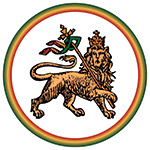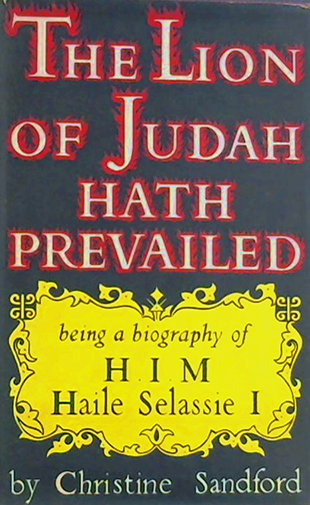THE LION OF JUDAH HATH PREVAILED
18
Eritrea
It is not within the scope of this book to disentangle the chequered history of Eritrea. It is sufficient to say that from antiquity it was bound up with that of Ethiopia and belonged to the old kingdom of Axum. In the sixteenth century, however, the Turks took possession of Massowah, the outlet on the Red Sea; and in the latter half of the nineteenth century, when Turkish influence in that area waned, the Italians occupied that port in Eebruary 1885, having already bought the port of Assab, farther south, from an Italian commercial company who had purchased it as a trading station in 1869.
Eritrea is on the whole an unproductive country, for erosion has devastated the hillsides and the only really productive agriculture is in the deep and narrow valleys. It is divided amongst four main groups of peoples speaking different languages—the Christian agriculturists of the plateau, the Arab-Beja Mohammedans, nomads of the northern hills and western plains, the negroid communities of the south-west, and the Arab-Afar Mohammedan nomads of the south-east. Bound in the old days with Tigre and on the main trade routes to the Red Sea ports it had a natural economic stability, but isolated from these its position became wholly uneconomic.
The occupation of Massowah and the subsequent penetration inland by the Italians led naturally to wars with the Ethiopians, of which the most notable incident, after the Treaty of Ucciali, already mentioned, was the defeat of the Italians at the battle of Adowa. When the situation stabilized after this battle, the frontiers of the Italian colony, which in 1890 had been named Eritrea by the Italians, became by mutual agreement those which still pertained at the outbreak of war in 1936. The name is derived from the Greek name for the Red Sea mentioned in an early first-century manuscript called The Periplus of the Erythraean Sea.
This arbitrary delimitation of the frontiers contained of course the seeds of future war. The colony with its frontiers established in 1896 contained a large slice of the Ethiopian province of Tigre, which fact made irredentism on the part of the Ethiopians inevitable. On the other hand the Italians were faced with the unpleasant fact that Eritrea could not be otherwise than a financial and economic burden to them unless its boundaries were pushed out southwards to include at least the rest of the province of Tigre; moreover they nourished a burning desire to avenge the disaster of Adowa.
After the conclusion of the war in 1941, when the Italians had been expelled from both Ethiopia and Eritrea, decisions as to the future of the Italian colonies in Africa had to await the signature of a Peace Treaty with Italy. Meanwhile a British caretaker administration of Eritrea was installed. There is little doubt that if this delay could have been dispensed with and a decision had been taken at once to hand the whole territory over to Ethiopia this would have met with general acceptance.
The Peace Treaty was eventually signed in Paris on 15th September 1947. Under its terms Italy abandoned all right and title to her former African colonies; and it was stipulated that their final disposal should be determined jointly by the Governments of the United Kingdom, the U.S.A., the Soviet Union, and France, with the proviso that if with respect to any of these territories the Four Powers are not agreed upon their disposal within one year from the coming into force of the Treaty of Peace with Italy, the matter shall be referred to the General Assembly of the United Nations for a recommendation, and the Four Powers agree to accept the recommendation and to give effect to it.
A fact-finding delegation, known as the Four Power Commission of Investigation, was dispatched to Eritrea by the four powers concerned, but in the end they failed to agree on a solution, and on 15th September 1948 they referred the matter to the General Assembly for a recommendation as provided.
On 21st November 1949 the General Assembly appointed a United Nations Commission for Eritrea with instructions to study the problem of Eritrea and to submit by 15th June 1950 proposals for its solution. The Commission visited the territory, made exhaustive inquiries on the spot, consulted all the Governments interested, and made its report to the Assembly on 8th June 1950. The Commission was composed of representatives of Burma, Norway, the Union of South Africa, Guatemala, and Pakistan; the first three of these agreed upon one set of conclusions; the other two submitted differing ones.
Finally, six months later—to be precise on 2nd December 1950—after protracted discussions and lobbying, the General Assembly of the United Nations adopted a resolution providing for the federation of Eritrea and Ethiopia under the sovereignty of the Ethiopian Crown. It laid down that local powers in the field of domestic affairs would be vested in the Eritrean State; that jurisdiction over defence, foreign affairs, currency and finance, foreign and interstate commerce, and external and interstate communications, including ports, were to be reserved to the Federal Government. A single nationality was to prevail throughout the federation; and the enjoyment of human rights and fundamental liberties was to be safeguarded in respect of all residents. The portion of the resolution laying down the foregoing provisions was to constitute the Federal Act. A later paragraph further provided that a constitution for Eritrea was to be drafted by a Commissioner appointed by the United Nations and submitted to a representative assembly of Eritreans chosen by the people. Finally the resolution determined that the Federal Act and the Constitution of Eritrea should enter into effect following ratification of the Federal Act by the Emperor of Ethiopia, and following approval by the Commissioner, adoption by the Eritrean Assembly and ratification by the Emperor of Ethiopia of the Eritrean Constitution.
All this came about. In his palace at Addis Ababa the Emperor Haile Selassie formally ratified the Federal Act on 11th September 1952. At sunset on 15th September the British flag was lowered in Asmara and the Ethiopian flag raised before an enormous crowd, and the federation came into being.
This baldly is the story, culled from official reports, of how the federation of Eritrea with Ethiopia came about. It was the fruit of five years of patient negotiation carried out on the whole in an atmosphere of restraint and calm.
From the beginning there were two solutions in the field—unification of Eritrea with Ethiopia or the complete independence of Eritrea. Later partition was proposed, but this suggestion found no favour with either Moslem or Christian. Really there was never any doubt that the solution would be unification—any other view was the result of either political bias or muddled thinking. That, at least, was the conviction of the Emperor and his friends. As usual he was prepared to bide his time, and his chief concern was that the solution should be one sponsored and approved by the United Nations. He and his Government would prefer complete unification, but if federation was the solution that would secure the blessing of the United Nations it should be accepted without reservation. He showed his confidence in the outcome by keeping himself in the background throughout the long negotiations, and leaving it to his Vice-Minister of Foreign Affairs, Ato Aklilu Habta Wald, to do all the talking and to press steadily the Ethiopian point of view.
There is no doubt that the successful result of the negotiations and the return of Eritrea to the motherland has enormously increased the Emperor’s prestige amongst his own people. They regard it as the crowning achievement of a long life of endeavour in the service of his people.
In Eritrea the feeling at first was one of relief that a decision had been reached and general determination to make the new system work; and of expectancy, to see what the future would bring—they had not long to wait. On 4th October the Emperor Haile Selassie I crossed the River March, the boundary between Ethiopia and Eritrea, and began a four weeks’ tour in Eritrea. Significantly, on his way he stopped to visit the ancient city of Axum and Adowa.
At the river had assembled the leaders of the Eritrean people to greet Their Imperial Majesties. In reply to the speeches of welcome the Emperor said: ‘By crossing the Mareb river we are doing away with the barrier which has for so long separated brother peoples,’ and he went on to remind his listeners that in July 1940 when he came out from England to lead his people in the liberation of the country he had declared:
Whether on this side or on the other side of the Mareb join in the struggle by the side of your Ethiopian brothers to throw off the yoke of foreign domination! Your destiny is bound up with that of the rest of Ethiopia in the strictest sense of the word. I have come to restore the independence of my country, including Eritrea.... whose people will henceforth dwell under the Ethiopian flag.
The seventy-mile drive from the frontier to the capital Asmara was, along its length, a heart-warming revelation of the welcome the people of Eritrea were prepared to give him—it was a triumph for his own personality as well as a sign that the solution of their problems had been accepted. On arrival at Asmara, Haile Selassie, before entering the palace, addressed the enormous crowd collected there to give him welcome. In a speech—which of set purpose was long and detailed because he felt that it was right that they should hear it from the Emperor’s own mouth—he gave a sketch of Eritrean history from the earliest times; he set out fully the efforts he had himself made to secure unity; he pointed out that, even during the Italian occupation of Eritrea, Eritreans in large numbers had entered the service of the Ethiopian Government; that now barriers would be down and Ethiopian resources would be at the service of Eritrea; and, finally, he appealed to all Christians and Mohammedans, Eritreans, Ethiopians, and foreigners to sink their differences and unite in making the new order work for the welfare and prosperity of all.
In the succeeding days the Emperor visited every part of the country, including the port of Massowah and even the islands off the coast, moving freely among the people without obvious escort. A special pilgrimage was made by him to the cemetery at Keren where are buried the allied soldiers who lost their lives in the famous battle of 1941. In a most moving tribute he said: ‘The soil on which we are now treading is soil sacred to the memory of thousands of families throughout the world whose beloved sons here fell in the cause of justice and freedom.’ He went on to give a detailed description of the battle and mentioned by name the commanders and units who took part, and to comment on the many parts of the world from which help came; and he ended: ‘We invoke the blessing of Almighty God on the heroes, named and nameless, of the battlefield of Keren, and now lay to their eternal memory our wreaths on these hallowed graves. This place we shall always respect, and devote our personal interest towards it.’
Wherever the Emperor went—and he went everywhere—he mingled freely with Christian, Mohammedan, Eritrean, and foreigner and stressed the need for unity and service, and there is no doubt his words created a great impression. The outstanding result of the visit was the growth of a feeling amongst the people that they could put their trust in Haile Selassie, and that whether things went well or ill he would see that their rights were protected and justice done.
Electronic edition created and published online by members of the
Emperor Haile Sellassie First Theocracy Reign
Order of the Nyahbinghi

November 19, 2019
